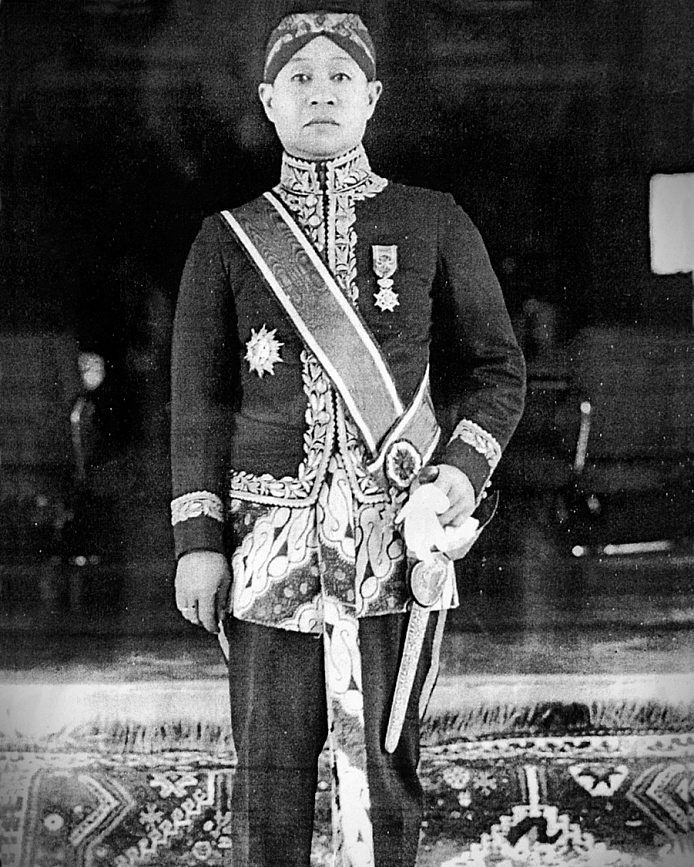|
Lutung Kasarung
Lutung Kasarung is a Sundanese folklore tale from West Java, Indonesia. Set in the Pasir Batang Kingdom, it tells the tale of a magical lutung (a type of black monkey) who helped a beautiful princess, Purbasari Ayuwangi, when her older sister attempted to rob her of her status as crown princess. Lutung Kasarung in Sundanese language which literally means "The Lost Ape", is from an old Sundanese quatrain. The theme and moral of the legend are similar to those of the European folktale "Beauty and the Beast". Sources Before it was put in written form, this legend was transmitted via Pantun Sunda, a traditional Sundanese oral performance. It was later written down by Sundanese writers, in both the Sundanese and Indonesian languages. Summary In the heaven called Svargaloka, there lived a handsome and powerful god named Batara Guruminda Kahyangan. He had almost become the highest god in the heaven; but in his pride, he defied Batari Sunan Ambu, the highest mother goddess in Sundanese ... [...More Info...] [...Related Items...] OR: [Wikipedia] [Google] [Baidu] |
Sundanese People
The Sunda or Sundanese ( id, Orang Sunda; su, ᮅᮛᮀ ᮞᮥᮔ᮪ᮓ, Urang Sunda) are an indigenous ethnic group native to the western region of Java island in Indonesia, primarily West Java. They number approximately 42 million and form Indonesia's second most populous ethnic group. They speak the Sundanese language, which is part of the Austronesian languages. The western third of the island of Java, namely the provinces of West Java, Banten, and Jakarta, as well as the westernmost part of Central Java, is called by the Sundanese people ''Tatar Sunda'' or ''Pasundan'' (meaning Sundanese land). Sundanese migrants can also be found in Lampung and South Sumatra, and to a lesser extent in Central Java and East Java. The Sundanese people can also be found on several other islands in Indonesia such as Sumatra, Kalimantan, Sulawesi, Bali and Papua. Origins Migration theories The Sundanese are of Austronesian origins and are thought to have originated in Taiwan. They migr ... [...More Info...] [...Related Items...] OR: [Wikipedia] [Google] [Baidu] |
Tamarind
Tamarind (''Tamarindus indica'') is a Legume, leguminous tree bearing edible fruit that is probably indigenous to tropical Africa. The genus ''Tamarindus'' is monotypic taxon, monotypic, meaning that it contains only this species. It belongs to the family Fabaceae. The tamarind tree produces brown, pod-like fruits that contain a sweet, tangy pulp, which is used in cuisines around the world. The pulp is also used in traditional medicine and as a metal polish. The tree's wood can be used for woodworking and Tamarind#Tamarind seed oil and kernel powder, tamarind seed oil can be extracted from the seeds. Tamarind's tender young leaves are used in Indian cuisine, Indian and Filipino cuisine. Because tamarind has multiple uses, it is cultivated around the world in Tropical zone, tropical and Subtropics, subtropical zones. Description The tamarind is a long-lived, medium-growth tree, which attains a maximum crown (botany), crown height of . The crown has an irregular, vase-shaped ... [...More Info...] [...Related Items...] OR: [Wikipedia] [Google] [Baidu] |
Sunda Kingdom
The Sunda Kingdom ( su, , Karajaan Sunda, ) was a Sundanese Hindu kingdom located in the western portion of the island of Java from 669 to around 1579, covering the area of present-day Banten, Jakarta, West Java, and the western part of Central Java. The capital of the Sunda Kingdom moved several times during its history, shifting between the Galuh (Kawali) area in the east and Pakuan Pajajaran in the west. The Sunda Kingdom reached its peak during the reign of King Sri Baduga Maharaja, whose reign from 1482 to 1521 is traditionally remembered as an age of peace and prosperity among Sundanese people. According to primary historical records such as the Bujangga Manik manuscript, the eastern border of the kingdom was the Pamali River (Ci Pamali, the present-day Brebes River) and the Serayu River (Ci Sarayu) in Central Java. Most accounts of the Sunda Kingdom come from primary historical records from the 16th century. The kingdom's inhabitants were primarily the eponymous ethni ... [...More Info...] [...Related Items...] OR: [Wikipedia] [Google] [Baidu] |
Dangdut
Dangdut () is a genre of Indonesian folk music that is partly derived and fused from Hindustani, Arabic and to lesser extent, Malay and local folk music. Dangdut is a most popular musical genre in Indonesia and a very popular in other Malay world countries as well because of its melodious instrumentation and vocals. Dangdut features a tabla and gendang beat. One of the most popular Dangdut musicians and singers such as Rhoma Irama, known as the "King of Dangdut"; Mansyur S.; Meggy Z; and Ellya Khadam include strong Indian-music influence in the basis of harmony, theme, and beat to their songs and also by other popular dangdut singers. A dangdut band typically consists of a lead singer, male or female, backed by four to eight musicians. Instruments usually include a tabla, gendang, flute, mandolin, guitars, sitar, drum machines, and synthesizers. The term has been expanded from the desert-style music to embrace other musical styles. Modern dangdut incorporates influences fro ... [...More Info...] [...Related Items...] OR: [Wikipedia] [Google] [Baidu] |
Musical Theatre
Musical theatre is a form of theatrical performance that combines songs, spoken dialogue, acting and dance. The story and emotional content of a musical – humor, pathos, love, anger – are communicated through words, music, movement and technical aspects of the entertainment as an integrated whole. Although musical theatre overlaps with other theatrical forms like opera and dance, it may be distinguished by the equal importance given to the music as compared with the dialogue, movement and other elements. Since the early 20th century, musical theatre stage works have generally been called, simply, musicals. Although music has been a part of dramatic presentations since ancient times, modern Western musical theatre emerged during the 19th century, with many structural elements established by the works of Gilbert and Sullivan in Britain and those of Harrigan and Hart in America. These were followed by the numerous Edwardian musical comedies and the musical theatre w ... [...More Info...] [...Related Items...] OR: [Wikipedia] [Google] [Baidu] |
Taman Ismail Marzuki
Ismail Marzuki Park, (Indonesian: Taman Ismail Marzuki, TIM), is an arts, cultural, and science center located at Cikini in Jakarta, Indonesia. Taman Ismail Marzuki complex comprises a number of facilities including six performing arts theaters, cinemas, exhibition hall, gallery, libraries and an archive building. The complex is built on an 9 hectares land area, which was previously a zoo. TIM is named after Ismail Marzuki, one of Indonesia's most influential composers. The goal to build the complex was to use it as a hub for fine and performing arts, a window into the Indonesia’s diverse and rich culture. The complex was previously known as Jakarta Arts Center. Management of TIM was handed to the Jakarta Arts Council, while operations are funded by rental fees for the facilities and subsidies from the Jakarta city administration. History Inaugurated by Jakarta Governor Ali Sadikin, on 10 November 1968, the 90 meter square cultural center was built on the former Taman Raden ... [...More Info...] [...Related Items...] OR: [Wikipedia] [Google] [Baidu] |
Sinetron
A soap opera, or ''soap'' for short, is a typically long-running radio or television serial, frequently characterized by melodrama, ensemble casts, and sentimentality. The term "soap opera" originated from radio dramas originally being sponsored by soap manufacturers.Bowles, p. 118. The term was preceded by "horse opera", a derogatory term for low-budget Westerns. BBC Radio's ''The Archers'', first broadcast in 1950, is the world's longest-running radio soap opera. The longest-running current television soap is ''Coronation Street'', which was first broadcast on ITV in 1960, with the record for the longest running soap opera in history being held by ''Guiding Light'', which began on radio in 1937, transitioned to television in 1952, and ended in 2009. A crucial element that defines the soap opera is the open-ended serial nature of the narrative, with stories spanning several episodes. One of the defining features that makes a television program a soap opera, according to Albert M ... [...More Info...] [...Related Items...] OR: [Wikipedia] [Google] [Baidu] |
Loetoeng Kasaroeng
''Loetoeng Kasaroeng'' is a 1926 fantasy film from the Dutch East Indies (modern-day Indonesia) which was directed and produced by L. Heuveldorp. An adaptation of the Sundanese folktale ''Lutung Kasarung'' (''The Lost Lutung''), the film tells of a young girl who falls in love with a magical lutung and stars the children of noblemen. Details on its performance are unavailable, although it is known to have been of poor technical quality and thought to have performed poorly. It was the first film produced in the country and the first to feature a native-Indonesian cast. It is likely a lost film. Plot Purbasari and Purbararang are sisters and in competition. Purbararang, the elder sister, teases Purbasari about the latter's lover, a lutung named Guru Minang; Purbarang's boyfriend, Indrajaya, is a handsome human. However, the girls discover that Guru Minang is actually a god who is more handsome than Indrajaya. Production The first showing of films in the Dutch East Indies was ... [...More Info...] [...Related Items...] OR: [Wikipedia] [Google] [Baidu] |
Raden Adipati Aria Muharam Wiranatakusumah
Raden Aria Adipati Wiranatakusumah V ( Old Spelling: Raden Aria Adipati Wiranatakoesoemah V; 23 November 1888 – 22 January 1965), commonly shortened to R. A. A. Wiranatakusumah V or just as Wiranatakusumah V, was an Indonesian politician who served as the first and only Wali Negara of Pasundan, during the Indonesian National Revolution. He was also the first Minister of Home Affairs of Indonesia and the second Chairman of the Supreme Advisory Council. He was born on 23 November 1888. He was educated at the Europeesche Lagere School (ELS), the Hogere Burgerschool (HBS), and later the Opleiding School Voor Inlandsche Ambtenaren (OSVIA). His first career in government began when he was a clerk at Wedana Tanjungsari, Sumedang in 1910. One year later, he became a Police Mantri in Cibadak, Sukabumi, and continued with the same position in Sukapura, Tasikmalaya. In 1912, he became Assistant Wedana of Obeureum, Tasikmalaya, before being appointed Regent of Cianjur from 1912 to 1920, ... [...More Info...] [...Related Items...] OR: [Wikipedia] [Google] [Baidu] |
Banteng
The banteng (''Bos javanicus''; ), also known as tembadau, is a species of cattle found in Southeast Asia. The head-and-body length is between . Wild banteng are typically larger and heavier than their domesticated counterparts, but are otherwise similar in appearance. The banteng shows extensive sexual dimorphism; adult bulls are generally dark brown to black, larger and more sturdily built than adult cows, which are thinner and usually pale brown or chestnut red. There is a big white patch on the rump. Horns are present on both sexes, and are typically long. Three subspecies are generally recognised. Banteng are active during the day as well as at night, though activity at night is more in areas frequented by humans. Herds comprise two to forty individuals, and generally a single bull. Herbivores, banteng feed on vegetation such as grasses, sedges, shoots, leaves, flowers and fruits. Banteng can survive without water for long stretches during droughts, but drink regularly i ... [...More Info...] [...Related Items...] OR: [Wikipedia] [Google] [Baidu] |





